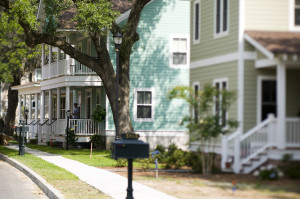What does your neighborhood have to do with sexual violence?

I’ve been wanting to write a post about the impact of neighborhood conditions on sexual violence for a while now, and it’s going to be a long one.
As a public health person, I’ve been reading about how important neighborhoods are to health for years. Neighborhood factors can make residents more or less likely to suffer a range of health problems, from higher rates of chronic disease and obesity-related disease, to poorer mental health, to increased rates of asthma, to engagement in risky health behaviors. Neighborhoods have also been shown to have important effects on many types of violence. Studies have shown an association between intimate partner violence and child maltreatment and neighborhood-level factors, like high unemployment, social disadvantage, residents’ perceived level of neighborhood problems, and neighbors’ willingness to intervene in violence. They have also shown that programs that seek to improve neighborhood conditions can prevent some of these kinds of violence.
We also know that sexual violence shares several risk and protective factors with other kinds of violence, such as rigid gender roles, the “isms,” strength of community sanctions for violence, absence or presence of healthy relationship role models, etc. So it seems possible that neighborhood factors could impact rates of sexual violence. There has not been very much research about this question, but a report from the Urban Institute has some interesting insights about how neighborhood settings and sexual violence might be related. The report talks about the decade-long Moving to Opportunity study, in which some families living in public housing in high-poverty, “chronically disadvantaged” neighborhoods were supported to move to affordable housing in low-poverty neighborhoods. It’s important to note that nothing about the families’ socioeconomic statuses changed because of the study; families just moved from one neighborhood to another.
The studies were looking for changes in mental health and risky behaviors in adolescents, and found “dramatic improvements” for adolescent girls, but not for boys. Based on interviews with these girls, one potential explanation was that for girls, moving to a low-poverty neighborhood meant “a profound reduction in fear of sexual harassment, coercion, and violence.” They “theorize that certain high poverty neighborhoods are characterized by a coercive sexual environment,” where adolescent girls (and probably women more generally) are exposed to high risk of sexual harassment and coercion.
But what about all the girls and women who were not able to move away from the high-poverty, disadvantaged neighborhoods? Can the sexually coercive environment they live in be changed? Can programs at a neighborhood level reduce rates of sexual harassment and sexual violence? There’s so much more we’d need to know about which neighborhood factors create these sexually coercive environments, and how those factors can be changed. Perhaps things like neighborhood cohesion (strong social networks, a sense of community, neighbors helping each other), collective efficacy (belief in the group’s ability to organize and make changes), or residents’ perception of neighborhood safety could be important here. A subsequent article on this study from 2013 did explore the girls’ and their parents’ experience of trying to stay safe in sexually coercive environments, but did not really focus on these questions.
What does your experiential evidence as a prevention practitioner tell you? How do you think neighborhood sexually coercive environments are created? Do you think that neighborhood-level risk and protective factors, like neighborhood cohesion, stability, collective efficacy, poverty, and general levels of violence, have something to do with it? Do you think there are any changes that could be made in a neighborhood that would help prevent at least some kinds of sexual violence? Is sexual violence too pervasive and widespread to address at a neighborhood level, or could this be an important piece of the puzzle?
Full citation: Popkin, S. J., Acs, G., & Smith, R. E. (2009). The Urban Institute’s program on neighborhoods and youth development: Understanding how place matters for kids. Washington, DC: The Urban Institute.
Link: http://www.urban.org/publications/411974.html
Full abstract: A central goal of U.S. social welfare policy is to ensure that all children have the opportunity to reach their full potential as productive adults. Yet it is increasingly clear that where children live plays a central role in determining their life chances. This paper provides an overview of The Urban Institute’s Program on Neighborhoods and Youth Development, which is dedicated to understanding the relationships between neighborhood-level factors and the well-being and development of children and youth and identifying and evaluating place-based, community-wide strategies to help children grow up to reach their full potential as adults.

Interesting blog post! We are also very interested in the relationship between violence against women and neighbourhoods. To that end we funded the Girls and Women’s Eyes on the Neighbourhood project. See project report:
http://www.crimepreventionottawa.ca/Media/Content/files/Publications/VAW/Women's%20Eyes-Final%20Report%20Nov%2020%20-%20formatted.pdf
We are also funding some follow up work – I’m looking forward to seeing the results.